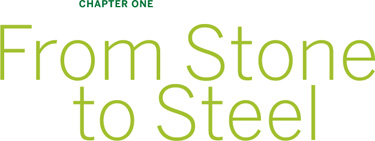 s the number of gourmet home kitchens burgeons , so does the number of home cooks who want to become proficient users of the professional-caliber equipment they own. And of all kitchen skills, perhaps the most critical are those involving the proper use of knives.
s the number of gourmet home kitchens burgeons , so does the number of home cooks who want to become proficient users of the professional-caliber equipment they own. And of all kitchen skills, perhaps the most critical are those involving the proper use of knives.
Norman Weinstein has been teaching his knife skills workshop at New York Citys Institute of Culinary Education for more than a decadeand his classes always sell out. Thats because Weinstein focuses so squarely on the needs of the nonprofessional cook, providing basic instruction in knife techniques that maximize efficiency while placing the least possible stress on the users arm. Now, Mastering Knife Skills brings Weinsteins well-honed knowledge to home cooks everywhere.
Whether you want to dice an onion with the speed and dexterity of a TV chef, carve a roast like an expert, bone a chicken quickly and neatly, or just learn how to hold a knife in the right way, Mastering Knife Skills will be your go-to manual. Each cutting, slicing, and chopping method is thoroughly explainedand illustrated with clear, step-by-step photographs. Extras include information on knife construction, knife makers and types, knife maintenance and safety, and cutting boards.

Published in 2008 by Stewart, Tabori & Chang
An imprint of Harry N. Abrams, Inc.
Text copyright 2008 by
Norman Weinstein
Photographs copyright 2008 by Mark Thomas
All rights reserved. No portion of this book may be reproduced, stored in a retrieval system, or transmitted in any form or by any means, mechanical, electronic, photocopying, recording, or otherwise, without written permission from the publisher.
Library of Congress Cataloging-in-Publication Data
Weinstein, Norman.
Mastering knife skills : the essential guide to the most important tools in your kitchen / By Norman Weinstein.
p. cm.
ISBN 978-1-58479-667-1
1. Kitchen utensils. 2. Knives. I. Title.
TX656.G78 1986
643.3--dc22 2007033419
Editor: Luisa Weiss
Designer: LeAnna Weller Smith
Production Manager: Tina Cameron

115 West 18th Street
New York, NY 10011
www.abramsbooks.com
FOR
CHI-CHI, MY WIFE, LIFES PARTNER, AND GUIDING LIGHT
AND
MY DEAR FRIENDS ANNA AMENDOLARA NURSE AND CAROLE WALTER,
WHO ENCOURAGED ME TO WRITE THIS BOOK
MANY YEARS AGO


Knife Skills, as a stand-alone course, was an offshoot of my many years as an instructor of Chinese cuisine. I realized my students needed to understand that the preparation of the ingredients was crucial to the outcome of the finished dish, that preparation often took more time than the actual cooking, and that good knife skills (actually cleaver skills, then) were essential to both Asian and Western cuisines.
Mastering Knife Skills thus represents the culmination of more than twenty-three years of thinking about, teaching, lecturing, and demonstrating this primary and essential skill in classrooms, lecture halls, and cookware stores. The inspiration to codify knife skills techniques came in great part from my students, first from analyzing the techniques they brought to the classroom, then thinking about how to solve the technical problems I witnessed in a way that could be easily communicated. It also came from the realization that the subject of knife skills is seriously neglected in cookbooks, food magazines, and cooking shows on television. Assumptions are made that the reader or viewer knows how to dice an onion or julienne a carrot. Those of us who teach cooking classes for the general public know full well that this assumption should never be made. The book is therefore devoted to filling this knowledge gap.
The popularity of and need for knife skills information can be attested to by the fact that in all the years I have been teaching, I have rarely had a class cancelled for lack of registration. Despite the fact that I currently teach over 120 classes a year at The Institute of Culinary Education in Manhattan, most are sold out. Some of my students have waited over a year to get in. I would like to attribute this wholly to my name and reputation, but I would be flattering myself. Students fill similar classes all over the country. They know that they need to learn this primary skill. Many of my students have admitted that the lack of good skills and the use of improper tools have made even simple meal preparation a grudging, time-consuming chore.
Mastering Knife Skills is designed to help the everyday household cook who, like it or not, has to put the daily bread on the table. By learning to select the proper knife and use it correctly with a maximum of ease and a minimum of stress, the preparation of the daily meal becomes a lot less time-consuming. I hope this book becomes your constant companion in the kitchen and that it expands not only your mechanical skills but your cooking repertoire as well.

Imagine the consternation our distant ancestors must have experienced after the first mastodon was felled. Now what? Eighteenth-century Scottish biographer and diarist James Boswell characterized our species as a cooking animal. But our ancestors use of fire is believed to be only half as old as their use of cutting implements.
Sharpened stones would do the job at first. The discovery of metals and alloys would further refine this most basic survival tool, essential for hunting, fabricating (cutting into parts), eating, and even protection. The progression from primitive tool to modern kitchen knife in effect illustrates the history of metallurgy and modern engineering.
THE STONE AGE
It is estimated that mankind began making stone tools about two and a half million years ago. The earliest cutting tools were fashioned from flint (a form of silica), obsidian (a volcanic glass similar to granite), quartzite, or even jade, all fairly homogeneous materials that yield rather sharp edges if properly fashioned. These stones were, however, brittle and suitable only for short implements, usually no longer than 4 or 5 inches long. The essential commodities of hides and meat could be cut with stone tools, but its unclear how durable the tools were.
Next page
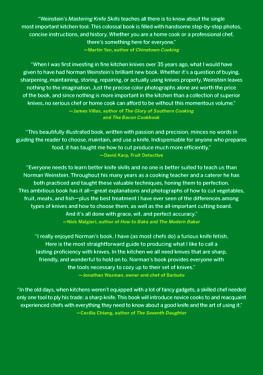
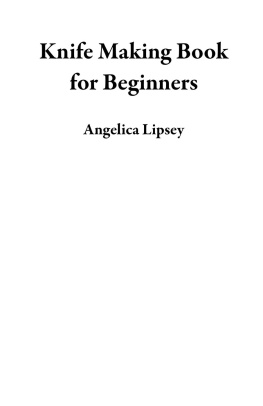
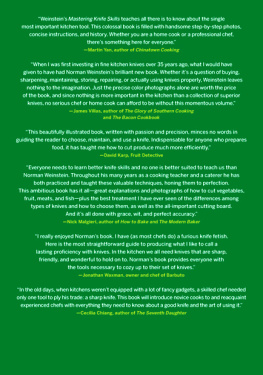
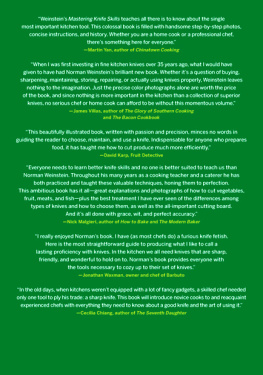
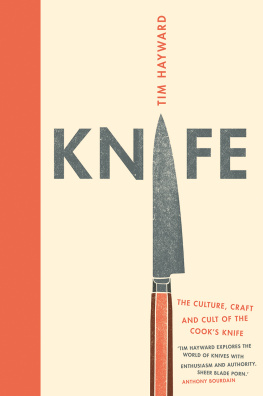

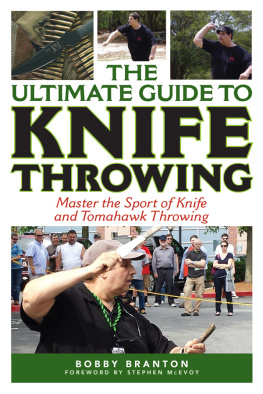
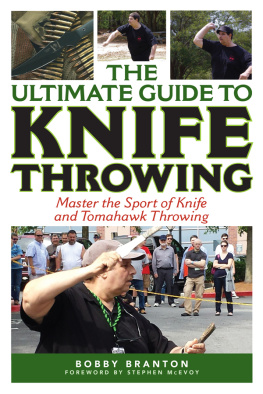
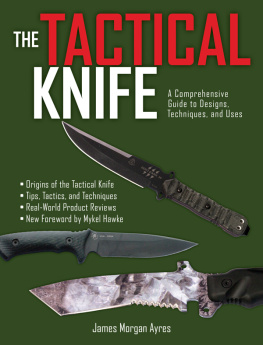

 s the number of gourmet home kitchens burgeons , so does the number of home cooks who want to become proficient users of the professional-caliber equipment they own. And of all kitchen skills, perhaps the most critical are those involving the proper use of knives.
s the number of gourmet home kitchens burgeons , so does the number of home cooks who want to become proficient users of the professional-caliber equipment they own. And of all kitchen skills, perhaps the most critical are those involving the proper use of knives.









